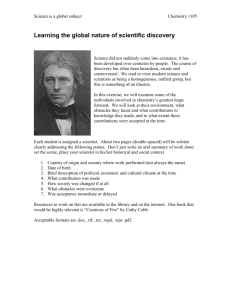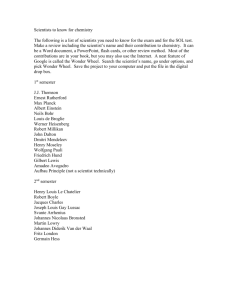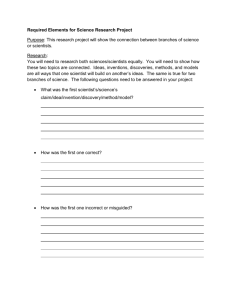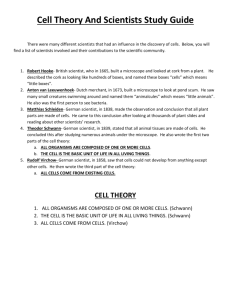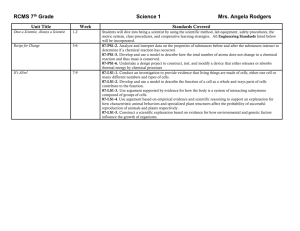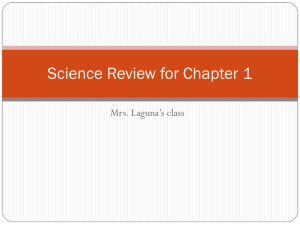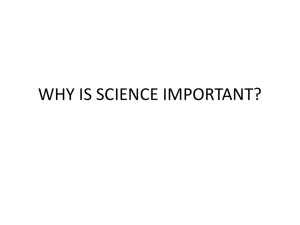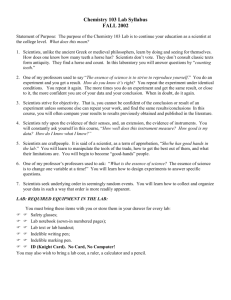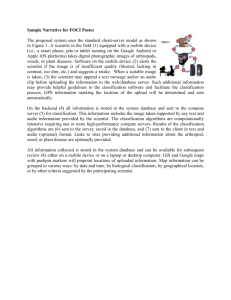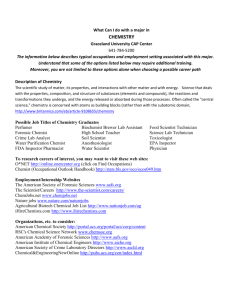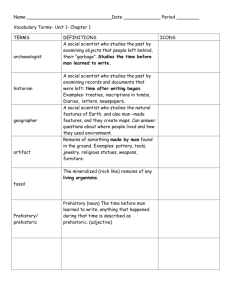The Scientist Yearbook Project - Due 12/7
advertisement
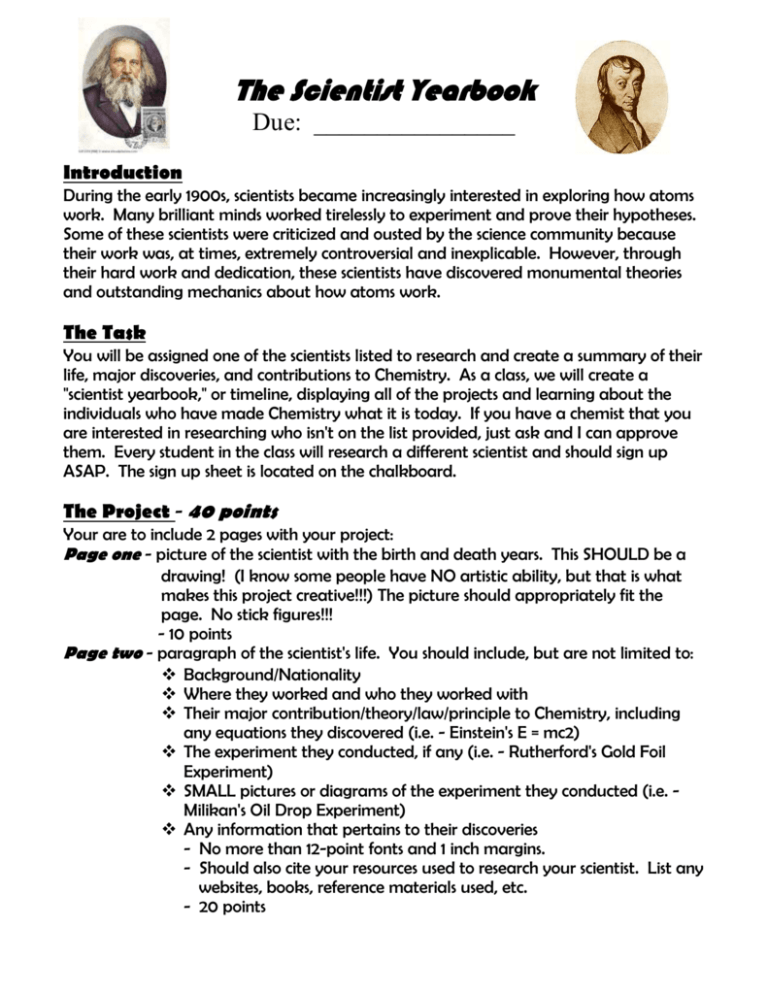
The Scientist Yearbook Due: ________________ Introduction During the early 1900s, scientists became increasingly interested in exploring how atoms work. Many brilliant minds worked tirelessly to experiment and prove their hypotheses. Some of these scientists were criticized and ousted by the science community because their work was, at times, extremely controversial and inexplicable. However, through their hard work and dedication, these scientists have discovered monumental theories and outstanding mechanics about how atoms work. The Task You will be assigned one of the scientists listed to research and create a summary of their life, major discoveries, and contributions to Chemistry. As a class, we will create a "scientist yearbook," or timeline, displaying all of the projects and learning about the individuals who have made Chemistry what it is today. If you have a chemist that you are interested in researching who isn't on the list provided, just ask and I can approve them. Every student in the class will research a different scientist and should sign up ASAP. The sign up sheet is located on the chalkboard. The Project - 40 points Your are to include 2 pages with your project: Page one - picture of the scientist with the birth and death years. This SHOULD be a drawing! (I know some people have NO artistic ability, but that is what makes this project creative!!!) The picture should appropriately fit the page. No stick figures!!! - 10 points Page two - paragraph of the scientist's life. You should include, but are not limited to: Background/Nationality Where they worked and who they worked with Their major contribution/theory/law/principle to Chemistry, including any equations they discovered (i.e. - Einstein's E = mc2) The experiment they conducted, if any (i.e. - Rutherford's Gold Foil Experiment) SMALL pictures or diagrams of the experiment they conducted (i.e. Milikan's Oil Drop Experiment) Any information that pertains to their discoveries - No more than 12-point fonts and 1 inch margins. - Should also cite your resources used to research your scientist. List any websites, books, reference materials used, etc. - 20 points Presentation - each person will present his or her research to the class. A quick summary of the scientist they researched and their major contribution to Chemistry. Use an index card to write notes to guide you through your presentation. The index card will not be turned in. (You are presenting to the class, not reading to the class. I expect good eye contact, etc. You are not allowed to read your report to the class!) - 10 points ***The projects will be on display so everyone in my classes can see them. ***Although information may be obtained using the Internet, any project that has information that is COPIED from the Internet will result in a score of ZERO and DISCIPLINARY ACTION will be taken! The Scientists John Dalton JJ Thomson Robert Millikan Ernest Rutherford Albert Einstein Niels Bohr Max Planck Louis de Broglie Werner Heisenberg Erwin Schrodinger Wolfgang Pauli Friedrich Hund Max Born Paul Dirac Democritus Aristotle Plato Robert Boyle William Crooks Marie Curie Eugene Goldstein Johann Kjelahl Gabriel Farenheight Isaac Newton Joseph Louis Proust William Thomson Hans Geiger James Chadwick Dmitri Mendeleev Amadea Avogadro Sir Francis Bacon Joseph Priestly Jacques Charles Antoine Lavoisier Alessandro Volta Joseph Lois Gay-Lussac Germain Hess Louis Pasteur August Beer Johann Josef Loschmidt Henry Louis Le Chatelier Henry Moseley Gilbert N. Lewis Linus Pauling Gregor Mendel Anders Celsius
